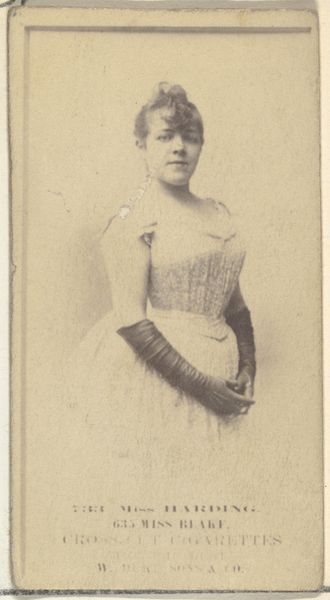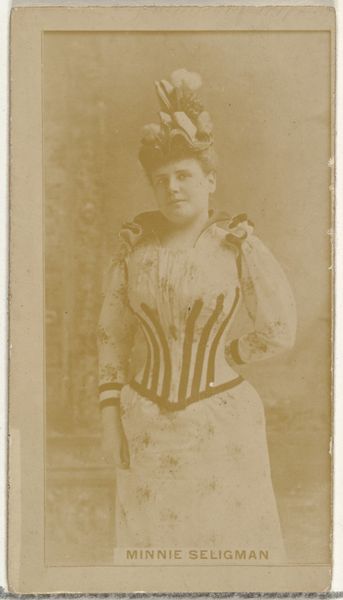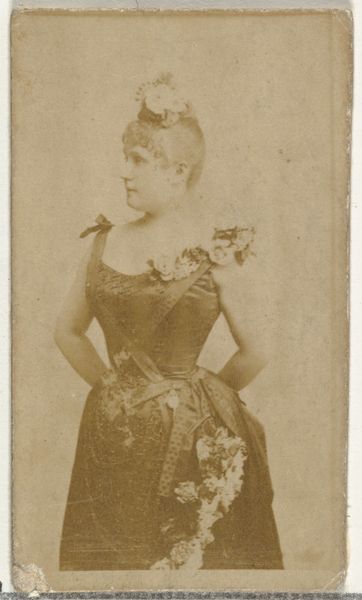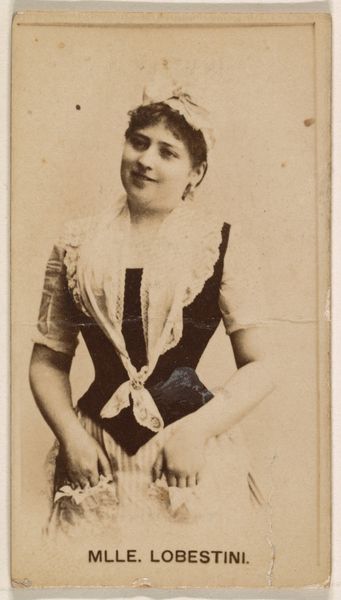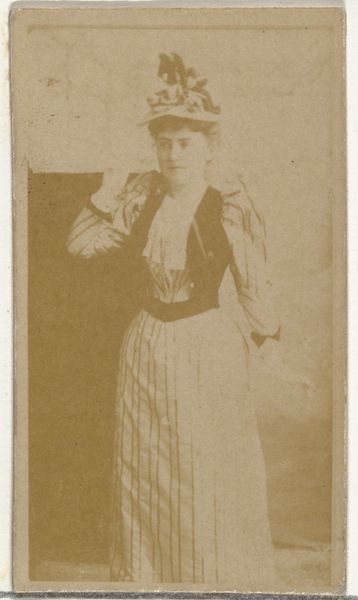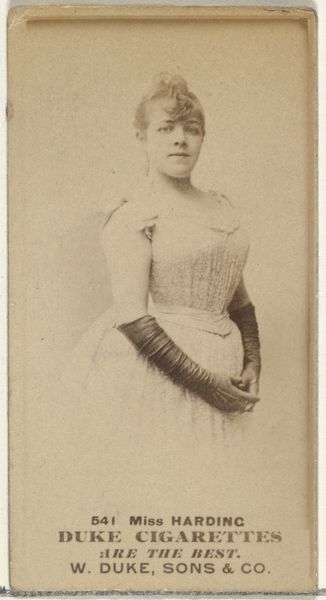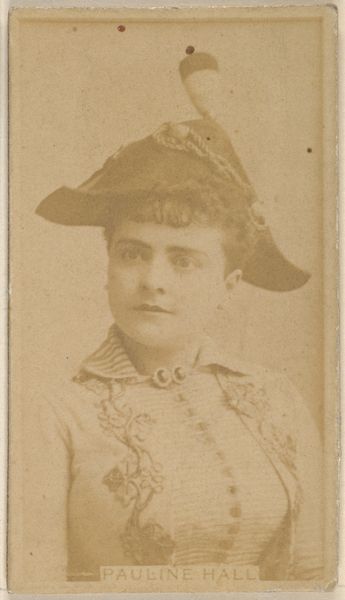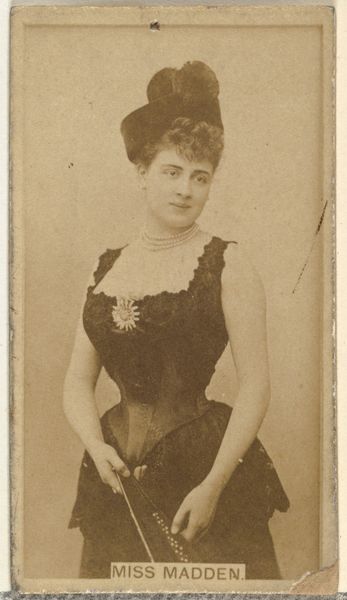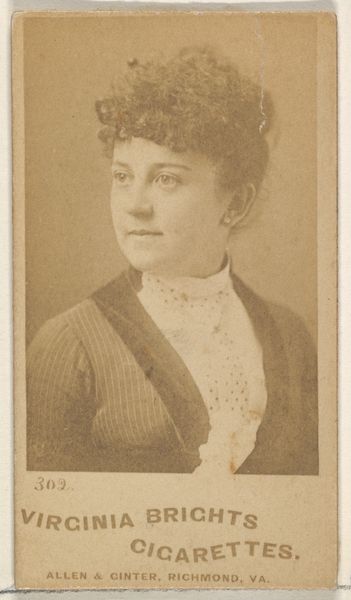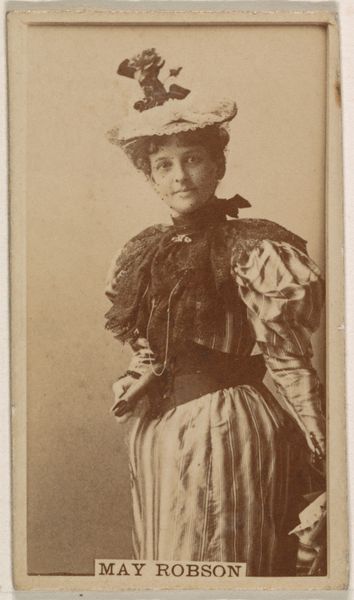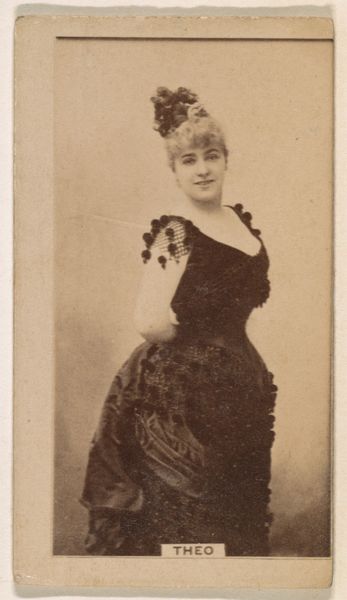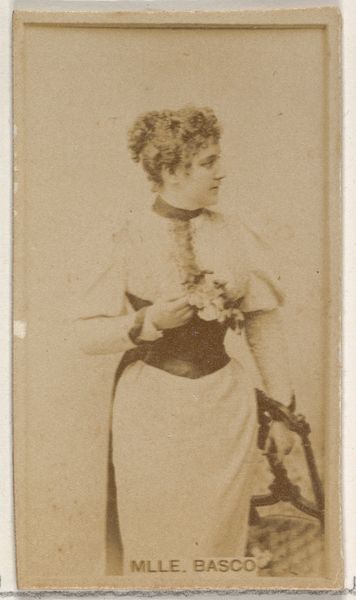
Camille D'arville, from the Actors and Actresses series (N145-8) issued by Duke Sons & Co. to promote Duke Cigarettes 1890 - 1895
0:00
0:00
drawing, print, photography
#
portrait
#
drawing
#
16_19th-century
# print
#
photography
#
19th century
Dimensions: Sheet: 2 11/16 × 1 3/8 in. (6.8 × 3.5 cm)
Copyright: Public Domain
Curator: This photographic print features Camille D'arville, likely dating between 1890 and 1895, and it was part of a promotional series for Duke Cigarettes. Editor: There's a melancholic mood to this portrait, something about the faded sepia tones and her composed, almost distant gaze. The detail is pretty incredible, actually, considering its apparent small size. Curator: Well, these cards were inserted into cigarette packs. The intention was to collect them and they often depicted popular actresses, athletes, or other public figures. We have to consider that this image functioned within a specific historical context of marketing, gender representation and the popular gaze. Editor: Let's talk more about the formal elements. The composition directs the eye centrally. The use of line—particularly in her gown, really draws the eye from top to bottom. What about her costume? It looks theatrical. Curator: It's elaborate, isn’t it? But beyond just aesthetic appreciation, her attire symbolizes a lot. It speaks of late 19th century fashion constraints for women, particularly actresses seeking legitimacy. And you can also think of her clothing as her armor of class. What meanings are encoded? Editor: The feather in her hat could hint at affectation, even rebelliousness—certainly a visual indicator of a woman pursuing a career outside the domestic sphere. Curator: And how does it relate to advertising? D’arville’s image is both a portrait and a product endorsement. How are female identities consumed and commodified? This speaks to labor exploitation, cultural power dynamics, etc. We’re not only considering beauty and talent, we're considering exploitation of it as well. Editor: Looking purely at the arrangement of shapes and textures, one begins to get an impression of refinement, though slightly dampened by that melancholy I sensed earlier. Curator: By situating the piece in the Gilded Age, you recognize its implications. Thank you for providing that perspective, seeing not just the artwork, but the larger structures shaping it and its impact. Editor: And thank you, it is critical to remember that this object is not just a picture, but also an economic engine to support gender roles that continue to inform fashion.
Comments
No comments
Be the first to comment and join the conversation on the ultimate creative platform.
